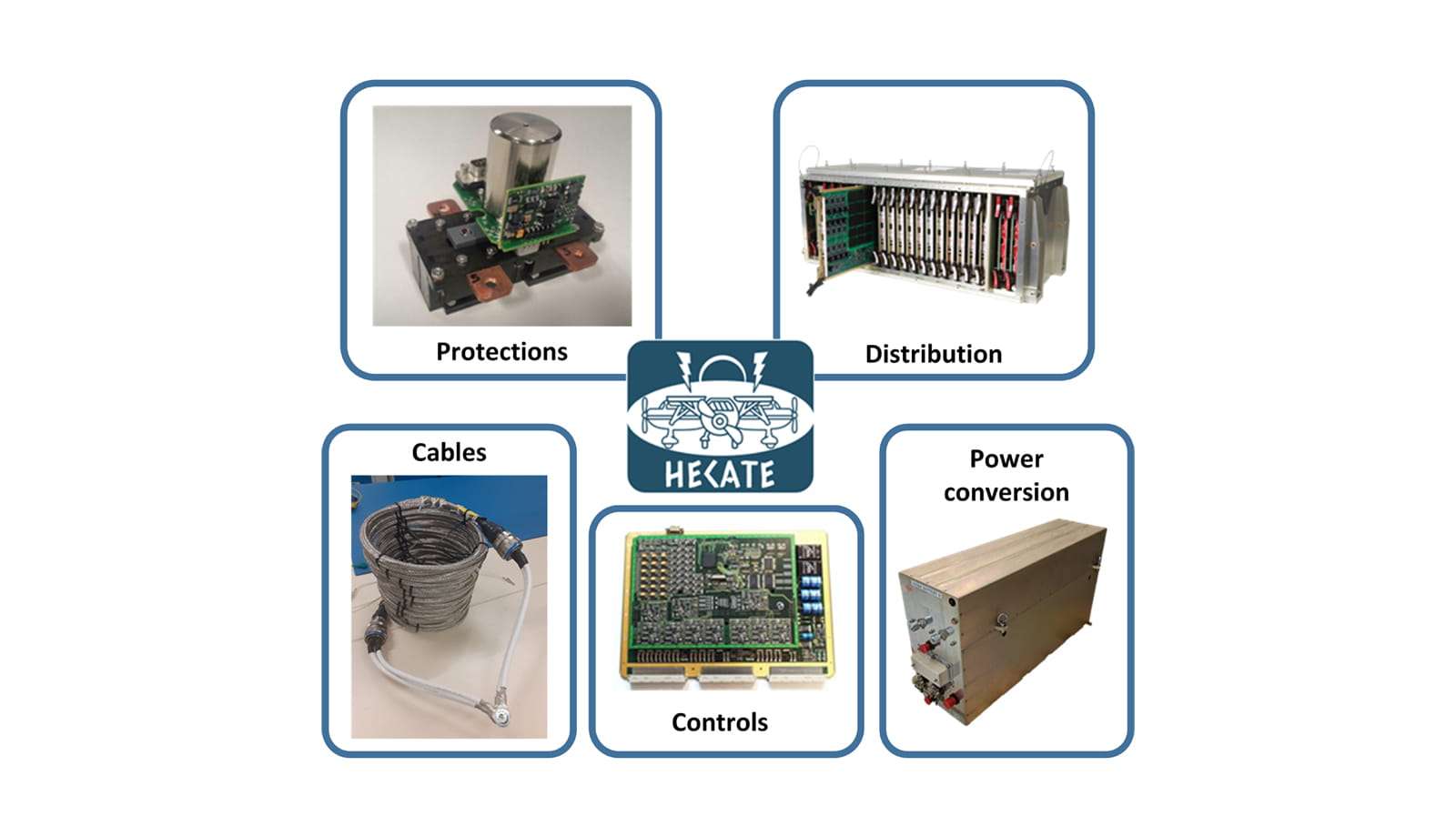
Collins Aerospace will coordinate the development of new high-voltage electric power distribution technologies under the European Union’s Clean Aviation HECATE project. For HECATE, which stands for Hybrid-ElectriC regional Aircraft distribution TEchnologies, Collins will lead the project’s steering committee, while Safran will serve as technical coordinator. The two companies will work with a consortium of 37 European aerospace industry partners across 10 countries, including Thales, Diehl Aerospace, Airbus Defence and Space, Leonardo and multiple universities. The HECATE consortium is set to receive roughly €34 million ($36.76 million) in funding from Clean Aviation and €6 million ($6.49 million) from UK Research and Innovation.
As the aviation industry works to achieve its goal of net-zero carbon emissions by 2050, the development of hybrid-electric aircraft is seen as one of the key ingredients to success. Yet in order to support hybrid-electric propulsion systems, new high-voltage distribution technologies will be required as electric power levels increase from hundreds of kilowatts in today’s aircraft, to megawatt levels in the aircraft of the future. The HECATE consortium will work to address this challenge for regional platforms, with a specific goal of demonstrating a >500 kW hybrid-electric architecture in ground tests at TRL5 by 2025.
“With decades of experience supplying electric power systems for the world’s most advanced aircraft, Collins is bringing that expertise to bear in the development of multiple next-gen electric technologies that are integral to sustainable flight,” said Mauro Atalla, Senior Vice President, Engineering & Technology for Collins. “Key among them are high-voltage distribution systems—a critical enabler for hybrid-electric propulsion. In collaboration with the HECATE consortium, we will develop new high-voltage technologies to help pave the way for future hybrid-electric platforms and reduced carbon emissions.”
Collins’ Applied Research and Technology (ART) organization in Cork, Ireland, will lead the company’s coordination of HECATE, while its facilities in Solihull, UK, and Nördlingen, Germany, will develop power conversion and secondary distribution technologies for the project. Safran will supply primary distribution and cabling. Thales and Diehl Aerospace will contribute specialized solutions for power electronics, system control and energy management. Airbus Defence and Space and Leonardo will provide the airframer perspective, and support requirements and validation activities.
“We’re proud to be selected as technical coordinator and supply primary distribution and cabling for the HECATE consortium. This project is in line with our strategic aims: it features breakthrough high-voltage electrical technologies, with a low carbon footprint. This agreement bolsters our position as a key player in innovative, competitive electrical systems,” says Bruno Bellanger, Executive Vice President and General Manager, Power Division, Safran Electrical & Power.
Pulling together the best talent and capabilities of the private and public sectors, the Clean Aviation Joint Undertaking is the European Union’s leading research and innovation programme for transforming aviation towards a sustainable and climate neutral future. Projects that involve UK sites are supported by funding from UK Research and Innovation, working in concert with Clean Aviation.
“The delivery of technological innovations and disruptive aircraft concepts will be the linchpin to achieving climate-neutral aviation,” said Axel Krein, Executive Director of Clean Aviation. “The launch of the HECATE project marks the start of a collaborative sprint towards higher efficiency and lower emissions for European aviation in line with the ambitions of the Paris Agreement and European Green Deal.”
About Clean Aviation Joint Undertaking
The Clean Aviation Joint Undertaking is the European Union’s leading research and innovation programme for transforming aviation towards a sustainable and climate neutral future. Pulling together the best talent and capabilities of the private and public sectors and developing cutting-edge technologies and making these available for a transformational leap in aircraft performance in the 2030s, the Clean Aviation Joint Undertaking will pave the way towards the EU’s ambition of climate neutrality by 2050.
Operating at the centre of a broad and diverse eco-system of players across Europe ranging from the aeronautical community, pioneering SMEs, research establishments and academia, it acts as a hub for new ideas and bold innovations. As a European public-private partnership, Clean Aviation pushes aeronautical science beyond the limits of imagination by creating new technologies that will significantly reduce aviation’s impact on the planet, enabling future generations to enjoy the social and economic benefits of air travel far into the future. Visit our website to find out more about Clean Aviation: www.clean-aviation.eu.
Funded by the European Union under GA no 101101961 – HECATE. Views and opinions expressed are however those of the author(s) only and do not necessarily reflect those of the European Union or Clean Aviation. Neither the European Union nor the granting authority can be held responsible for them.

Be the first to comment